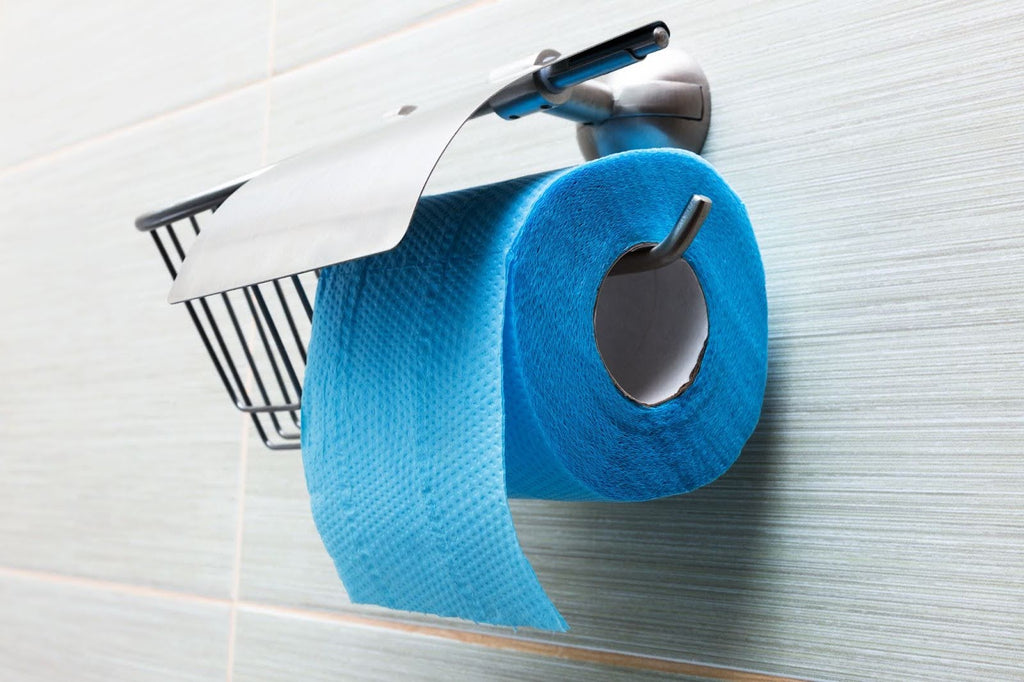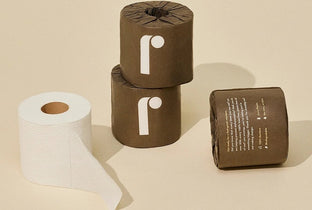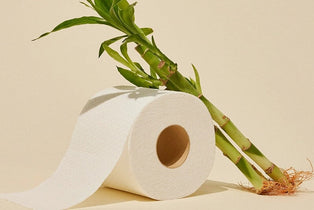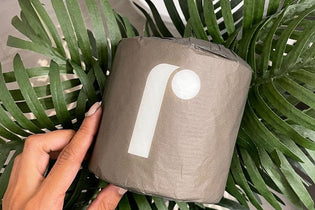
TLDR
Ah, the past – a time when colored toilet paper graced bathrooms with its vibrant colors and added flair to the mundane task of daily hygiene. If you've ever wondered about the rise, fall, and environmental impact of colored toilet paper, you're in the right place. Join us on a journey through the technicolor world of toilet paper rolls and their impact on our planet.
The Rise and Fall of Colored Toilet Paper
The Colorful Fifties and Sixties
In the effervescent fifties and swinging sixties, bathroom aesthetics went beyond the toilet seat. The era introduced us to colored bathrooms and, with it, the desire for matching colored toilet paper. The funky patterns on the wallpaper needed an equally funky tissue to complement it. Toilet paper became more than just a functional item; it became an interior design accessory. Imagine having a colorful toilet paper roll perfectly matched to your bathroom tiles. Pink bathrooms would gleam with pink toilet paper, while sleek black tiles would be accompanied by black toilet paper. It wasn’t just about hygiene anymore; it was about making a statement!
Colored toilet paper was also a reflection of the social and cultural climate of the time. The fifties and sixties were a period of great optimism and change, and people were eager to express themselves in new and exciting ways. Colored toilet paper was a way to add a touch of personality to the bathroom, and it was also a way to show off your unique style.
The Decline in the Eighties
Moving along in our colorful toilet paper history lesson, as the eighties rolled around (no pun intended), concerns began to emerge. The beautiful colored toilet paper we loved came with a price. There were health and environmental concerns regarding the dyes used in making them. Additionally, a shift in design preferences favored more neutral palettes. Thus, the reign of colorful toilet tissue began its decline.
The health concerns were based on the fact that some of the dyes used in colored toilet paper were known to be irritants or even carcinogenic. The dyes could also leach into the environment and pollute waterways [1].
The environmental concerns were also valid. The production of colored toilet paper required more water and energy than the production of white toilet paper. Additionally, the dyes used in colored toilet paper were often non-biodegradable, which meant that they would not break down naturally in the environment [1]. It's worth noting that while colored toilet paper poses these concerns, many wonder, is toilet paper biodegradable in its standard form? The answer largely depends on the materials and processes used in its production.
The shift in design preferences was also a factor in the decline of colored toilet paper. In the eighties, people began to favor a more minimalist and streamlined aesthetic. Colored toilet paper was seen as too flashy and ostentatious for the new design trend.
Considering the possible negative impacts of colored toilet paper, combined with its elevated cost, outdated look, and potential environmental consequences, it's clear why uncolored toilet paper appears to be the preferable option.
The Environmental Impact of Colored Toilet Paper
The Harmful Effects of Dyes
Dyes, especially when they’re not environmentally friendly, can have harmful effects on both our skin and the planet. The dyes in colored TP can lead to irritations and allergic reactions in some people. Moreover, these dyes can negatively affect our water systems when flushed down the toilet. They don’t degrade easily and can introduce harmful chemicals into our water supply [1].
These dyes are made from petroleum products and can contain harmful chemicals such as benzene, toluene, and xylene. These chemicals can irritate the skin and eyes, and they have also been linked to cancer and other health problems [2].
In addition, synthetic dyes are typically not biodegradable [3]. This means that they do not break down easily in the environment and can pollute waterways. When synthetic dyes are released into the water, they can harm aquatic life and contaminate drinking water supplies.
The Shift to White Toilet Paper
Over time, white toilet paper began to dominate the market. Its purity signified safety and cleanliness. Beyond the classic white, the market became creative with alternatives like scented, quilted, and even glow-in-the-dark toilet paper. It's hard to imagine what Joseph Gayetty, the inventor of modern toilet paper [4], would think about these innovations! Instead of a different color, brands began focusing on types of toilet paper with features like 3-ply for added softness or medicated paper for additional hygiene benefits.
The shift to white toilet paper can be attributed to a number of factors, including:
- The perceived safety and cleanliness of white paper.
- The variety of features that are now available in white toilet paper, such as softness, thickness, and medication.
- The environmental concerns associated with colored toilet paper, particularly the use of synthetic dyes.
- A change in bathroom design preference where modern bathrooms have strayed away from the colorful spaces of the 60s and 70s.
Reel Paper: A Sustainable Alternative
Now, more than ever, the toilet tissue industry is under the microscope for its environmental impact. Traditional toilet paper is made from wood pulp, leading to deforestation and posing a significant threat to our environment.
Enter Reel Paper. We’ve developed products like our recycled paper towels made from 100% recycled paper, and sustainable toilet paper made from bamboo. Yes, bamboo! Unlike traditional wood pulp, bamboo grows quickly, making it a renewable resource. Our traditional toilet paper alternative is not only septic-safe but also incredibly gentle on your skin.
While we can't color our bathrooms with colored TP anymore, we can ensure a sustainable future with choices that count. It's not just about a paper roll anymore; it's about the planet.
So, while the era of colored toilet paper might be behind us, our future looks bright with sustainable and eco-friendly options. From the days of colorful rolls to the current age of environmental consciousness, the humble toilet paper roll has come a long way. The next time you reach for that paper towel or napkin, think of the journey it's been on and the choices you can make for a greener tomorrow.
Sources:
- Annie Walton Doyle. 2010. “Health Concerns with Colored Toilet Paper.” Hunker. Hunker. August 14, 2010. https://www.hunker.com/12363444/health-concerns-with-colored-toilet-paper.
- Kobylewski, Sarah, and Michael F Jacobson. 2012. “Toxicology of Food Dyes.” International Journal of Occupational and Environmental Health 18 (3): 220–46. https://doi.org/10.1179/1077352512Z.00000000034.
- Ali, Hazrat. 2010. “Biodegradation of Synthetic Dyes—a Review.” Water, Air, & Soil Pollution 213 (1-4): 251–73. https://doi.org/10.1007/s11270-010-0382-4.
- Cottonelle. n.d. “Unraveling the History of Toilet Paper | Cottonelle® Canada.” Www.cottonelle.com. https://www.cottonelle.com/en-ca/tips-advice/toilet-paper-101/toilet-paper-history#:~:text=Most%20common%20were%20things%20like.



0 comments